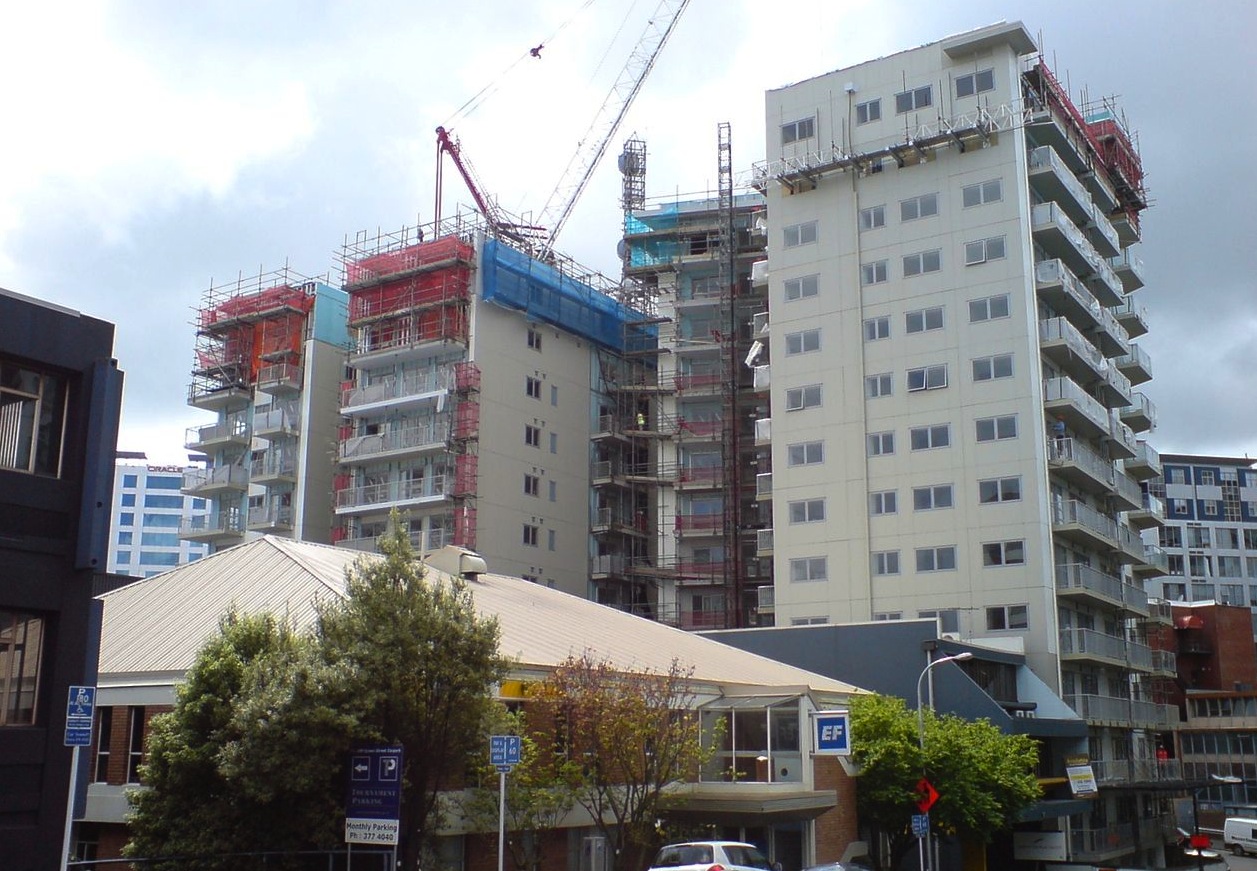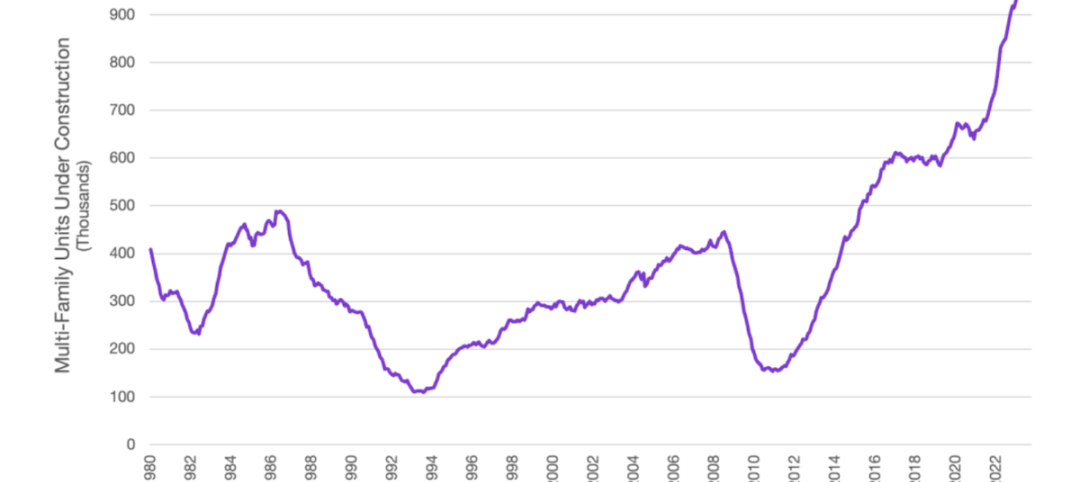By the end of 2015, 49 of 54 U.S. markets tracked by CoStar Group, the commercial real estate research firm, are expected to see their apartment vacancy rates increase.
That would suggest that supply in the multifamily sector is catching up with—or in several markets surpassing—demand. Last year, the 340,000 multifamily units started represented the highest level of construction since the 1980s. And some 20,000 new apartments are expected to come online in both Dallas and Denver alone this year.
Yet, despite the threat of oversupply there appears to be a consensus emerging, that positive demographic and economic forces could keep multifamily demand robust—and construction humming—at least through 2016.
The ever-optimistic National Association of Home Builders, for example, forecasts 358,000 multifamily starts in 2015, a level that Robert Denk, NAHB’s senior economist, thinks is “healthy and sustainable.” He told Multifamily Housing News recently that he expects that construction level to be maintained “for the next couple of years.” Denk also expects the country’s economic growth rates to be “high” in 2016.
In its Fourth-Quarter and Year-End 2014 Report, CoStar acknowledges that developers may need to “dial back” new construction after 2015 to keep vacancies (which ended last year at their lowest point in 10 years) and rents at healthy levels. CoStar estimates that new supply could push vacancy rates to 5.5% by the end of 2015.
On the other hand, today’s renter cohort, comprised largely of Millennials, “will take longer to transition into home buying than any demographic group in the last 30 years—obviously a good trend for apartment owners,” says CoStar. The research firm also foresees a 2-million-person increase in Millennial employment over the next few years, resulting in 1.53 million new households. “Apartment investors will find plenty of demand for new product.”
While some renters eventually will start families and relocate to homes in the suburbs, “a larger share of older households will be in the rental market,” mostly for lifestyle reasons. CoStar expects landlords to make a concerted effort to address the needs of renters as they age.
Multifamily as an asset class now exceeds $3 trillion, according to Andrew Florance, Founder and CEO of CoStar Group, which has detailed information on over 450,000 apartment properties in its database, the industry’s largest. More than 100 million Americans now rent, and 30 million people move annually. On Feb. 17, CoStar re-launched Apartments.com, its website for online searches of apartments, condos, and rental homes. Florance projects that, based on anticipated demand, within the next 10 years CoStar Group could achieve $550 million in annual revenue and $250 million in annual cash flow from this site.
CoStar will invest $75 million into marketing Apartments.com in 2015, a multimedia campaign that is scheduled to kick off on March 1.
Related Stories
MFPRO+ News | Dec 7, 2023
7 key predictions for the 2024 multifamily rental housing market
2024 will be the strongest year for new apartment construction in decades, says Apartment List's chief economist.
Codes and Standards | Dec 7, 2023
New York City aims to spur construction of more accessory dwelling units (ADUs)
To address a serious housing shortage, New York City is trying to get more homeowners to build accessory dwelling units (ADUs). The city recently unveiled a program that offers owners of single-family homes up to nearly $400,000 to construct an apartment on their property.
MFPRO+ News | Dec 5, 2023
DOE's Zero Energy Ready Home Multifamily Version 2 released
The U.S. Department of Energy has released Zero Energy Ready Home Multifamily Version 2. The latest version of the certification program increases energy efficiency and performance levels, adds electric readiness, and makes compliance pathways and the certification process more consistent with the ENERGY STAR Multifamily New Construction (ESMFNC) program.
Transit Facilities | Dec 4, 2023
6 guideposts for cities to create equitable transit-oriented developments
Austin, Texas, has developed an ETOD Policy Toolkit Study to make transit-oriented developments more equitable for current and future residents and businesses.
Multifamily Housing | Nov 30, 2023
A lasting housing impact: Gen-Z redefines multifamily living
Nathan Casteel, Design Leader, DLR Group, details what sets an apartment community apart for younger generations.
Products and Materials | Nov 30, 2023
Top building products for November 2023
BD+C Editors break down 15 of the top building products this month, from horizontal sliding windows to discreet indoor air infusers.
Engineers | Nov 27, 2023
Kimley-Horn eliminates the guesswork of electric vehicle charger site selection
Private businesses and governments can now choose their new electric vehicle (EV) charger locations with data-driven precision. Kimley-Horn, the national engineering, planning, and design consulting firm, today launched TREDLite EV, a cloud-based tool that helps organizations develop and optimize their EV charger deployment strategies based on the organization’s unique priorities.
MFPRO+ Blog | Nov 27, 2023
7 ways multifamily designers can promote wellness in urban communities
Shepley Bulfinch's Natalie Shutt-Banks, AIA, identifies design elements that multifamily developers can use to maximize space while creating a positive impact on residents and the planet
MFPRO+ New Projects | Nov 21, 2023
An 'eco-obsessed' multifamily housing project takes advantage of downtown Austin’s small lots
In downtown Austin, Tex., architecture firm McKinney York says it built Capitol Quarters to be “eco-obsessed, not just eco-minded.” With airtight walls, better insulation, and super-efficient VRF (variable refrigerant flow) systems, Capitol Quarters uses 30% less energy than other living spaces in Austin, according to a statement from McKinney York.
MFPRO+ News | Nov 21, 2023
California building electrification laws could prompt more evictions and rent increases
California laws requiring apartment owners to ditch appliances that use fossil fuels could prompt more evictions and rent increases in the state, according to a report from the nonprofit Strategic Actions for a Just Economy. The law could spur more evictions if landlords undertake major renovations to comply with the electrification rule.

















